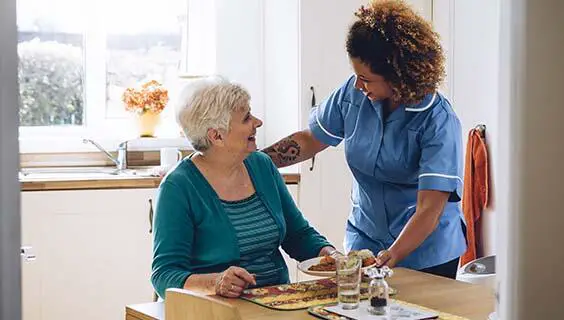
Live-In Care for the Elderly: How it Works
It’s hard when someone you care for can no longer take care of themselves. You want them to have the best life possible, but you aren’t sure exactly how to give it to them. Assisted living homes are an option, sure, but you hate the idea of taking your loved one out of their homes. Is there another way?
Live-in care provides families with a suitable alternative to assisted living or nursing homes. Though these services tend to be cost-prohibitive, there are ways to affordably receive care that provides your loved one with an enhanced personal touch.
In this article, we take a look at the ins and outs of live-in care. What it is, how it works, and how you can go about getting it for your elderly loved one to ensure the highest quality of care possible.
What is Live-in Care?
Live-in care is all about keeping the elderly person in their home for as long as possible. In these situations, a healthcare professional stays onsite at all times to help the elderly person take care of their basic needs.
The scope of the services provided will usually depend on what the patient needs done. For this reason, live-in care can look quite different from case to case. Sometimes the services are required due to mental deterioration, while other situations are the product of physical limitations.
In all cases, it is a good recourse for those who can afford it. Elderly people who get to stay in their own homes tend to have a brighter outlook on life than those who don’t — a metric that can be a strong indicator of positive long-term healthcare outcomes.
Do Live-in Caregivers Sleep at the Elderly Person’s Home?
Sleep is usually not permitted in live-in care arrangements. The idea is that if a person actually needs a professional onsite 24/7, said person should be readily available at all times. Because the job is demanding, the shifts are usually broken up into two or three slots a day.
There are various other models of at-home care that may have a professional onsite only during the daytime hours. However, in no typical live-in care arrangement is the healthcare professional allowed to sleep on the job.
What are the Benefits of Live-in Care?
The benefits of live-in care are both physical and mental. On the strictly physical end, live-in care patients receive more attention than they would at a care facility. This translates into more exercise, and a significantly enhanced capacity to have their needs routinely assessed.
There are also substantial emotional benefits to having live-in care. Elderly people can easily become socially isolated. Their family works. Their friends may either have passed on or become home-bound like them.
These feelings of loneliness can have a significant impact on their emotional health. Live-in caregivers ensure that the elderly person always has someone on hand to spend time with.
Is Live-in Care a Permanent Arrangement?
It doesn’t have to be. In certain cases, a person may need live-in care because they have experienced a debilitating injury, or are recovering from surgery. In these cases, a live-in care provider may be onsite to help them meet the needs they can’t currently take care of on their own.
Are There Different Kinds of Live-in Care?
There are. Some are more focused on specific physical or mental ailments. These might include rehab and other forms of health support. Others are more geared toward the overall well-being of the patient.
These agencies might focus more on companionship, and helping to make sure that all of the patient’s basic needs are being met. Before you select an agency, take an inventory of the patient’s needs. Finding the right provider is a key component of generating long-term success from the arrangement.
Will a Live-in Care Provider Run Errands? How About Clean?
The main role of a live-in care provider is to look after their patient. However, ensuring a sanitary environment does fall under the perimeters of this responsibility. Most agencies will include light cleaning in their services.
Some may also allow the live-in caregiver to run simple errands for the elderly person. It is always a good idea to agree going in on the scope of services that the agency is able or willing to provide.
Are Caregivers Medical Professionals?
There may be forms of care that require licensed medical professionals, such as a nurse. Usually, however, the caregivers involved in live-in care do not hold medical degrees. They will be able to assist with medications and ensure swift medical intervention in the event of a situation, but they usually will not be qualified to provide those interventions themselves.
Once again, it’s a question of understanding the scope of services before you choose an agency.
Does Medicare Pay for Live-in Care?
Unfortunately, Medicare does not pay for live-in care. Cost is very prohibitive for many elderly people, with expenses coming in at around $30 an hour for most agencies. People who have live-in care most often pay for it out of pocket.
However, there are other options, like long-term care insurance. Additionally, there are state-sponsored exemptions and funding options that may make live-in care more affordable. While the cost may eliminate this as an option for some people, it is always a good idea to explore all of your options thoroughly before giving up.